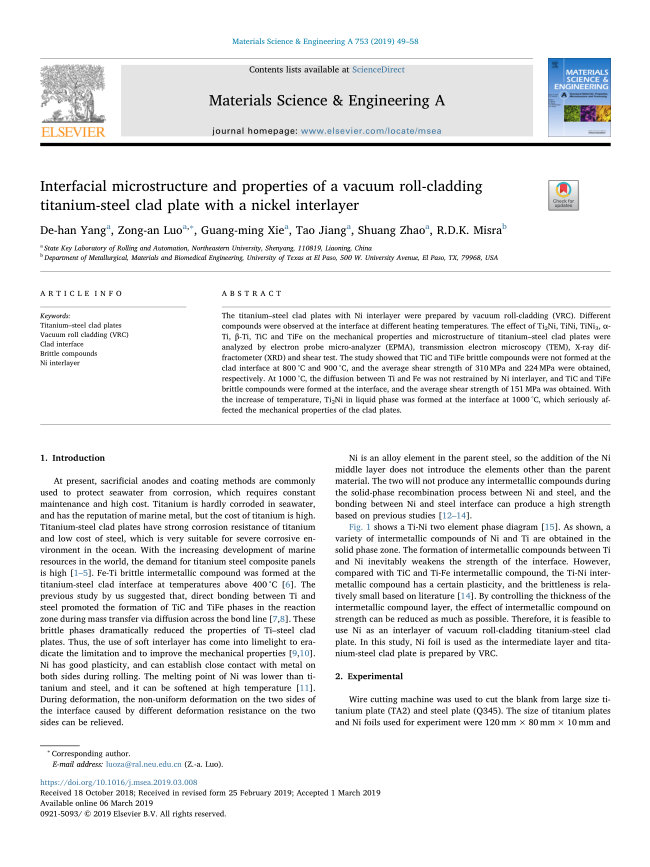The titanium–steel clad plates with Ni interlayer were prepared by vacuum roll-cladding (VRC). Different compounds were observed at the interface at different heating temperatures. The effect of Ti2Ni, TiNi, TiNi3,α-Ti,β-Ti, TiC and TiFe on the mechanical properties and microstructure of titanium–steel clad plates were
analyzed by electron probe micro-analyzer (EPMA), transmission electron microscopy (TEM), X-ray diffractometer (XRD) and shear test. The study showed that TiC and TiFe brittle compounds were not formed at theclad interface at 800 °C and 900 °C, and the average shear strength of 310 MPa and 224 MPa were obtained, respectively. At 1000 °C, the diffusion between Ti and Fe was not restrained by Ni interlayer, and TiC and TiFe brittle compounds were formed at the interface, and the average shear strength of 151 MPa was obtained. With the increase of temperature, Ti2Ni in liquid phase was formed at the interface at 1000 °C, which seriously affected the mechanical properties of the clad plates.
